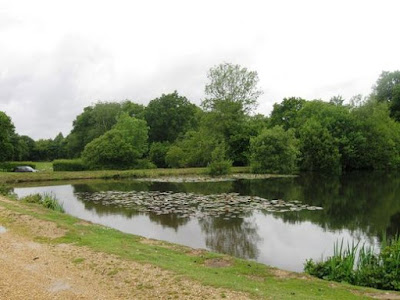I didn't know any of this - but I did know that I didn't know how the smokeless powders came to be.😏
Around 1863 a Prussian artillery officer Captain Johann Edward Schultze invented & patented a form of granular nitro cellulose 'gun cotton' - that he made by thinly slicing veneers of timber and using machinery to punch-out discs or granules that were then boiled until they were pure cellulose .. and then treated them with the sulfuric & nitric acid mixture making them into pure nitro-cellulose. These grains were then soaked in a nitrate liquid # and dried - causing them to burn evenly. His process started with grains ... whereas the previous 'black-powder' had to be wet mixed and sieved and tumbled and dried and 'corned' before sorting into multiple grades.
Herr Schultze began commercial manufacture of the first 'smokeless powder' in Potsdam, near Berlin in 1864 - but like so many other gun powder plants in that era, in 1868 the whole lot burnt to the ground. - Gun Cotton factories were going-up in flames all over the place.
Anyone stupid
Shortly after that fire in Germany - two Englishmen Clement Dale and William Bailey bought the license to produce the patented single-based nitro-powder in UK and they converted a failed black powder factory in The New Forest, near the village of Fritham, to the new process.
English New Forest Schultze Powder Factory & Reservoir.
"Here and there at intervals wide apart are various buildings of light structure from one of which rises a tall chimney instrumental in raising steam to drive a 10HP sawing machine which rapidly creates the "wood powder". This is subjected to chemical washing leaving hardly anything behind save pure woody material, known as lignine or cellulose. The next operation involves the conversion of these cellulose grains into a sort of gun cotton material by digestion with a mixture of sulphuric and nitric acids. Next it is washed with carbonate of soda and dried. The resultant grains are stored away until the time of packaging and dispatch when they are charged with a definite percentage of a nitrate powder -- # nitrate of baryta is preferred. All the buildings requisite for manufacturing this explosive are cheap and flimsy so that if they did catch fire no loss would ensue. The plant and machinery is of small cost in comparison to that used for making black gunpowder and Schultze wood powder is sold at a price commensurate with its cheap production."
# (nitrate of baryta is Barium nitrate, the inorganic compound with the chemical formula Ba(NO3)2. It, like most barium salts, is colorless, toxic, and water-soluble. It burns with a green flame and is an oxidizer, it is used in pyrotechnics.) (- The other stuff - "Barium Meal" used for internal X-Rays is mostly Barium Sulfate).
Eyeworth Pond In The New Forest -
Was Made As A Reservoir By The Schultze Factory
- For Boiling & Washing the Grains Free Of Acid.
The British enterprise succeded & grew becoming a founding part of Nobel Industries - that then was formed into ICI Industries (1926) .. so it sort-of continues to this day - but the original forest location has only a few clues as to what went on there 120 years ago.
Here's a LINK to a detailed technical history:
Annie 'Get-your-gun' Oakley used only Schultze powder in her shooting exhibitions - so dependent was she - that she and six friends smuggled some into France in 1889 hidden in hot-water bottles under their clothing .. and when that ran-out she had more mailed in:
" ..she received a notice to go to the Customs House to pick up a box mailed to her by some friends in England. The box was rather large and inside it were two dozen fresh eggs and an unsigned note telling her that she should try the packing material out in her gun before throwing it away. The eggs were packed in Schultze powder! She gladly paid the 40 cent import duty on the eggs and as she reported, "I never shot better in my life than I did the next three days, either winning or dividing every event. It may be that I was in better form, but I'm sure my Schultze load had a great deal to do with my good scores."
Marty K.
Eyeworth Lodge - You could Have Bought This Seven Bedroom
Part of The Old Factory Site Last Year (2017) - With 8 Acres Of Land
- For 4 Million Pounds.
MK.





No comments:
Post a Comment